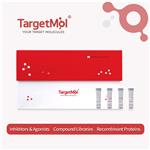Description
Quorum sensing is a regulatory system used by bacteria for controlling gene expression in response to increasing cell density. Controlling bacterial infections by quenching their quorum sensing systems is a promising field of study. The expression of specific target genes, such as transcriptional regulators belonging to the LuxR family of proteins, is coordinated by the synthesis of diffusible acylhomoserine lactone (AHL) molecules. N-
tetradecanoyl-
L-
Homoserine lactone (C
14-
HSL) is a small diffusible signaling molecule involved in quorum sensing, thereby controlling gene expression and affecting cellular metabolism in bacteria. It appears later than shorter acyl chain AHLs in developing biofilms and, like other long chain AHLs, stimulates bacterial growth. C
14-
HSL also alters the proteolytic activity and enhances the migration of some strains of
Proteus mirabilis.
Uses
Tetradecanoyl-L-homoserine lactone is an active quorum sensing modulator first recognised in Rhodobacter capsulatus. Tetradecanoyl-L-homoserine lactone and other acylhomoserine lactones have been detected in hundreds of bacterial species and, while the homologues vary between species and strains, the homoserine lactones are the major chemical modulators of within and between cell communication and regulation. The most significant variable defining the function of the homoserine lactone is the length of the acyl chain, with shorter chains displaying opposing actions to the longer chains.

